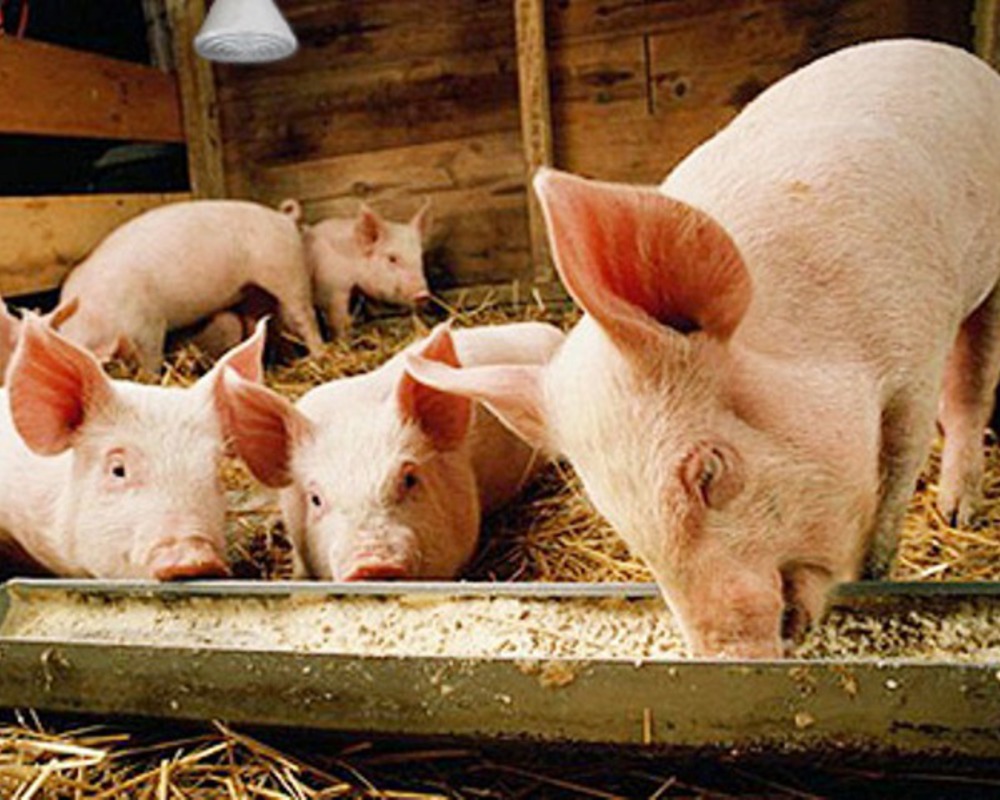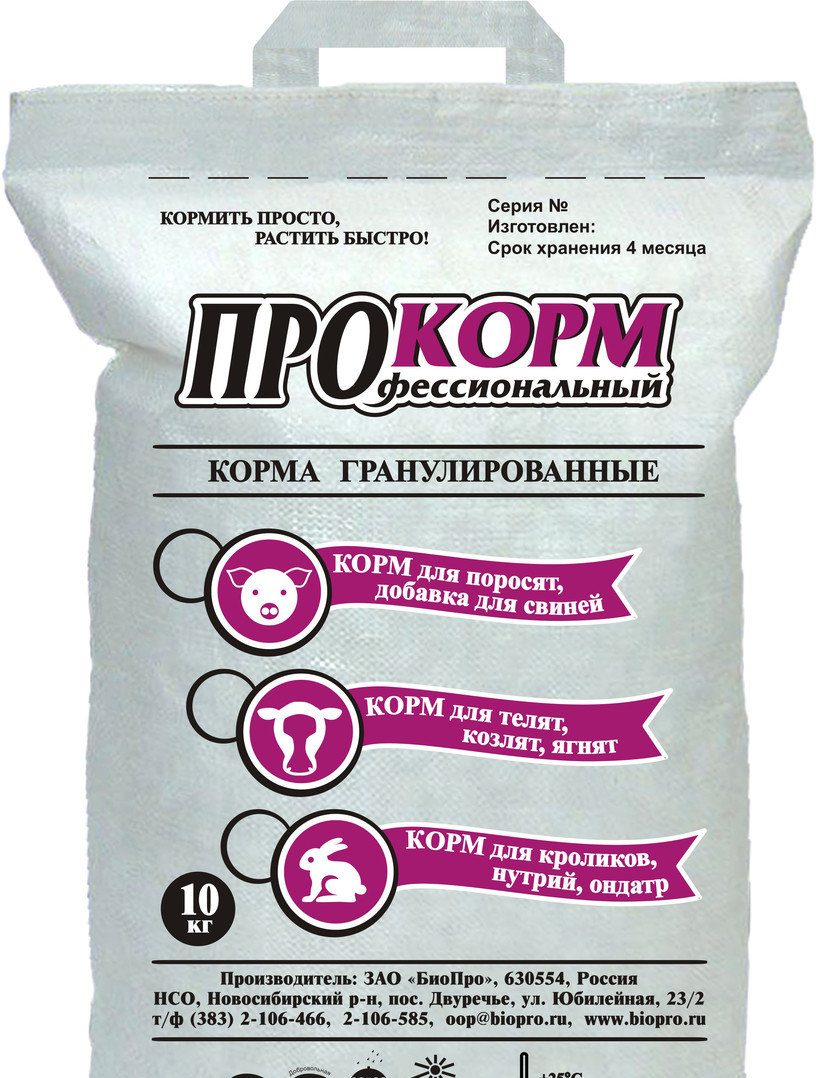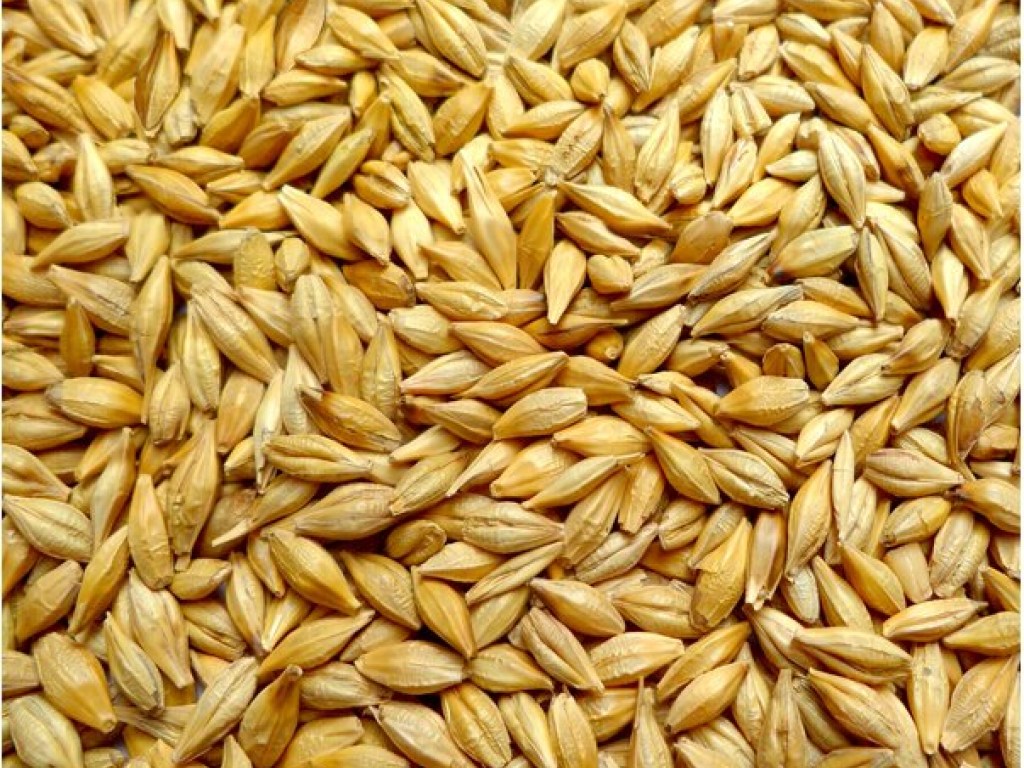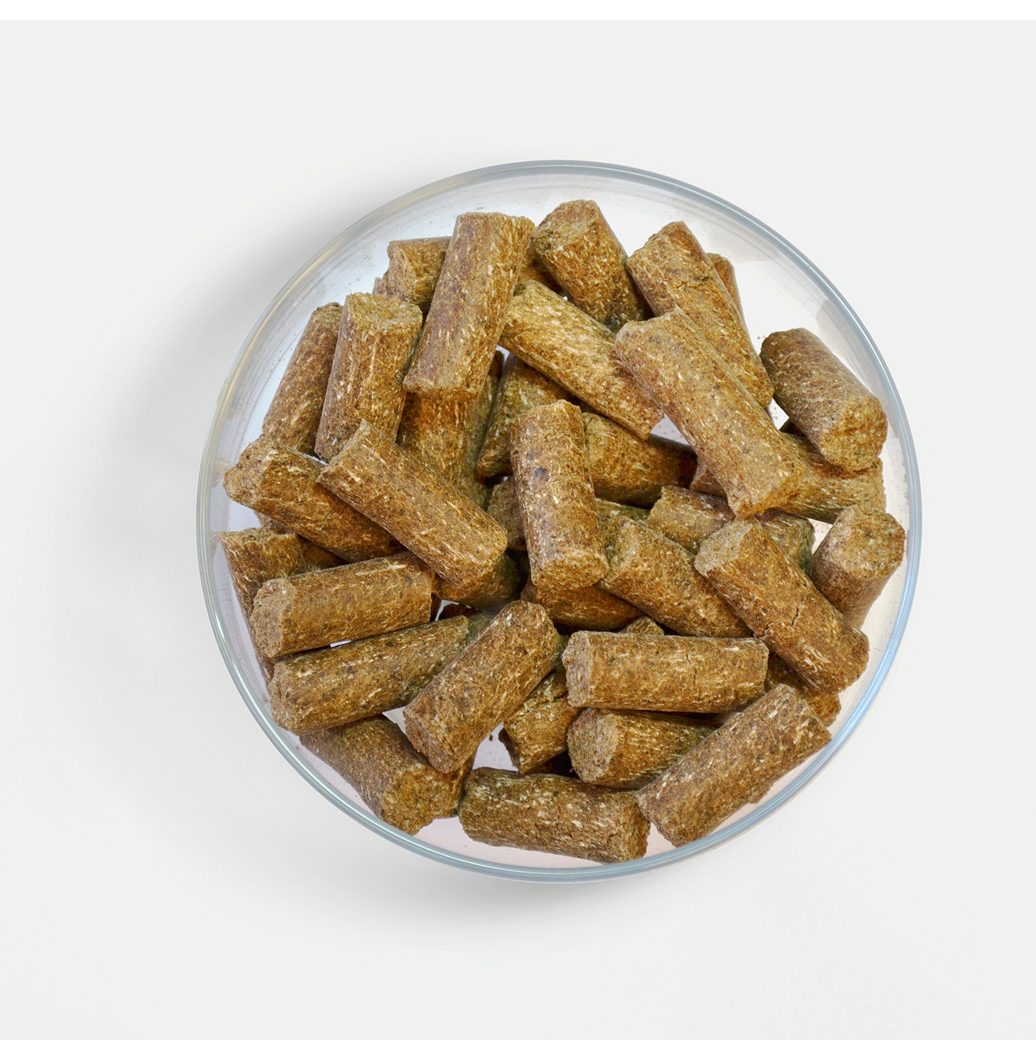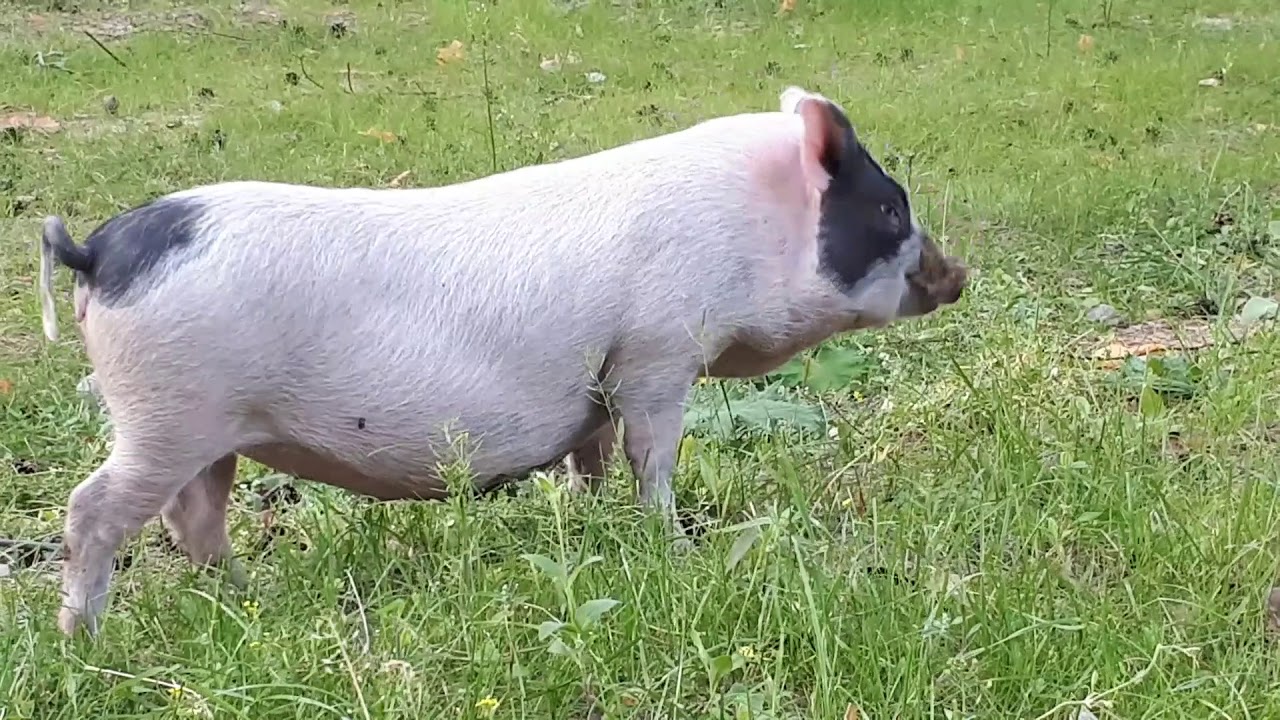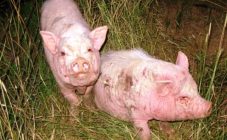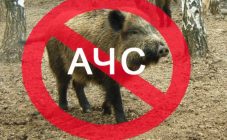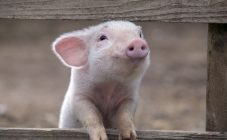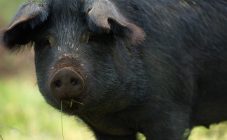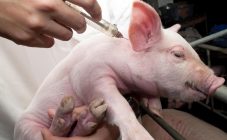Content:
- How to feed pigs properly
- Varieties of feed additives
- Types of compound feed for pigs and their composition
- The main types of compound feed
- Feeding gilts with growth stimulants
- Pig vitamins, feed yeast and salt
- Types of grains that can be fed to a pig
- Fattening pigs with green feed
- Tips from experienced pig breeders
Pig feed additives are a very useful product that is actively used in farms. They are rich in vitamins and trace elements, which benefits the animal, accelerates its growth and weight gain, and increases fertility. Thanks to the balanced composition, the immune system becomes strong. Pig feed additives are used not only on large farms but also in small households. Having decided to breed Vietnamese or ordinary piglets, it is better to first familiarize yourself with information on the topic of raising pigs at home for beginners.
How to feed pigs properly
By feeding your pig correctly, you can achieve rapid growth. With low costs for pig feed, the farmer can get the most tender meat.
The taste characteristics of meat directly depend on the feed that the pig received:
- when fed with waste from the fishing industry, the meat will have an appropriate flavor;
- if there is a significant amount of dairy products in the diet, the meat will acquire juiciness and appetizing aroma;
- loose and tasteless pork is obtained by feeding pigs with buckwheat, potatoes, wheat bran and corn;
- with a large amount of vegetables in the diet, the fat becomes flabby;
- low quality pork results from fattening cattle with soybeans, cake, fish meal and oats.
It is very important to give a balanced diet. Feeding pigs is a very important process.
There are several types of pigs feeding:
- meat;
- bacon;
- fattening for fat.
Varieties of feed additives
The most common feed additives that allow gilts to grow quickly include:
- Hormones - anabolic drugs with male and female sex hormones. The drug is injected into the body through injections that are placed behind the ears. The hormone is completely absorbed only after 7-9 months. The most effective anabolic is DES (synestrol), which causes a wild appetite.
- Non-hormonal supplements. The most common drugs in this category are drugs such as flavomycin, streptomycin, biomycin and grisin. Antibiotics help to stimulate the growth of livestock, destroy dangerous viruses and bacteria that negatively affect the health of piglets. The listed drugs have similar properties. A non-hormonal feed supplement can be added to the diet of a pig as early as 10 days after birth. The preparations are mixed with animal feed. The exact dosage can be calculated only by measuring the body weight of the piglets.
- Enzyme supplements that can be obtained from the liver, kidneys and spleen of adult cattle. The feed additive is given to newborn piglets in the first days of their life. In the future, the dosage is selected individually according to the body weight of the growing piglet. The drug is administered intramuscularly.
- Phosphatides are a thick, light brown paste that is purified from vegetable oil. The paste contains alcohol, fatty and phosphoric acid.The substance stimulates the growth of piglets and provides good weight gain in the range of 10-12%. The bait is diluted with hot water and mixed with the compound feed.
Types of compound feed for pigs and their composition
What pigs eat to get a good weight gain are often asked by novice farmers. When raising young animals, it is worth considering that the digestive system of young animals is still too sensitive, therefore it is unacceptable to give the kids coarse food. Small average daily piglets, almost immediately after birth, begin to transfer to a special feed for pigs, since mother's milk alone is not enough for full development. Gradually, kids begin to include in the menu:
- pre-starter feed;
- starter.
Only after 1.5 months, the piglets can be offered pelleted feed, which will increase productivity. It contains active ingredients and a number of vitamins. By providing pigs with feed, you can not worry about the occurrence of poisoning or a malfunction in the digestive tract. During the production process, products are heat treated. This improves the digestibility and excludes the likelihood of the safety of pathogenic microorganisms.
The combination of nutrients selected by the manufacturers is optimal.
The main types of compound feed
What does a pig eat and what kind of food is suitable for it? How to feed pigs properly? These are the questions most often asked by novice breeders. Pig feeds differ in composition. There are such types as:
- special prestarter organic type;
- start intended for feeding piglets;
- start for cattle, the age of which is within 60-105 days;
- pig premixes;
- start intended for sows or boars.
In addition, feed mixtures may differ in:
- appearance (crumbly food, grits or granulated);
- according to its purpose (full type and concentrate).
The composition of feed for pigs can be varied. When producing any mixture, the manufacturer uses cereals. Their percentage in feed is usually 45-55%. In addition, add to the mixture:
- legumes;
- soybean meal;
- meat and bone meal.
Barley, which can be found in any pig feed, is an excellent source of energy with positive effects on livestock health.
Raising pigs is troublesome, but quite profitable. It is very important to adhere to a feeding and feeding plan regardless of the breed of piglet.
| Raw materials | The percentage of its content in compound feed |
|---|---|
| Barley | 0.27 |
| Sunflower meal | 0.1 |
| Oats | 0.27 |
| Meat and bone type of flour | 0.16 |
| Alfalfa type flour | 0.18 |
The rest of the percentage comes from table salt and feed chalk.
Feeding gilts with growth stimulants
What do pigs eat for fast growth? Before starting piglets, it is important to learn everything about pigs and learn about the feeding norms for pigs. To speed up the growth of animals, you can use growth promoters for pigs such as:
- Kenzyme - a drug that enhances the nutritional value of feed;
- Flavomycin - used for fattening pigs up to 6 months of age;
- UkastaLtd - used for growing pigs;
- Flaveco (40);
- Flavomycin (80);
- Allzyme PF;
- Coli;
- Carnifeed;
- Lincomix;
- Bio-Moss;
- Enterodox;
- TerramycinAcid-Pak;
- Aciprol;
- Lupro-mix;
- Sal-Zap;
- Terramycin;
- BiosafBiosprint;
- Salocin;
- Sanquinara.
Stimulants are a special category of drugs aimed at increasing the weight gain of livestock. Medicines help to normalize the digestive system, build mass, improve the quality of meat and lard.Stimulants affect the development of the animal and increase its performance. A significant advantage of the drug is its non-toxicity.
Pig vitamins, feed yeast and salt
Piglets and adult pigs need to be given dietary supplements that contain:
- calcium, which strengthens the bone tissue of young cattle, normalizes metabolic processes;
- phosphorus, which is responsible for the absorption of calcium and is involved in the metabolism of carbohydrates and fats;
- enzymes that enhance the metabolic process of protein in the body, thanks to which amino acids are fully absorbed from the main menu;
- sulfur, which is involved in the formation of vitamins;
- vitamin H, which prevents the development of most skin ailments, controls the number of blood cells that are responsible for transporting oxygen;
- vitamin B, which plays an important role in the metabolic processes of the body and excludes the growth retardation of piglets.
Yeast should not be given in pure form to livestock. It is more expedient to combine the additive with the feed mixture, which is called yeast, which involves a couple of implementation methods:
- A sponge technique, in which 200 g of yeast should be diluted in 10-12 liters of warm water. 4-5 kg of compound feed are mixed into the resulting composition. The mixture is infused for 5 hours (during this period it is important to systematically stir the composition). After the specified period of time, 30 liters of liquid should be added to the composition and 10 kg of concentrates should be added. After a 3-hour infusion, you can feed the pigs.
- A safe technique where cereals, liquid and powder are mixed. Such nutrition is introduced to piglets on the 12th day of their life. It is imperative that the proportions of yeast and feed are kept.
The calculation of the dosage of vitamins can be seen in the instructions for the drug.
Types of grains that can be fed to a pig
Pigs are fed with a concentrated feed mixture, which includes:
- bran and cereals;
- cake;
- grain waste and legumes.
Most often, manufacturers use in the preparation of feed:
- barley;
- oats;
- corn.
Barley is high in protein and influences the flavor profile of pork. Barley is an excellent source of energy.
Oats contain a large amount of fiber and fat, but it is not recommended to use it in the last stage of fattening, as it negatively affects the taste characteristics of meat. However, if necessary, it can be mixed with more barley and offered to the pig.
Corn has a high metabolic energy and is considered the most nutritious grain in the world. Corn is fed together with peas, cake, meal and dairy products. In the first months, its volume in the diet should be within 45%. 50 days before slaughter, this percentage must be halved. Otherwise, the lard will become tasteless and lose its presentation..
Peas are no less popular when feeding piglets. However, it is worth remembering that before offering it to the cattle, you need to brew the product. Peas can only be given to animals in limited quantities!
Meal and cake are waste that is obtained in the production of vegetable oil. For feeding pigs, you can use:
- linseed meal;
- soybean meal and cake;
- sunflower meal.
Before giving cake and meal, they need to be steamed for 3-4 hours. The water that remains after is to be drained. So that the residual fat does not affect the quality of pork, meal should be excluded from the diet together with cake.
Also, animals need to include in the menu:
- bran;
- potatoes;
- sugar and fodder beets;
- carrot;
- pumpkin.
Fattening pigs with green feed
In addition to grains, it is important to include the following green feeds in the cattle diet:
- clover;
- peas;
- vetch-oat mixture;
- a young swan;
- nettle and beet tops;
- alfalfa.
Green food is rich in proteins, minerals and vitamins. Any greens are crushed before serving, and nettles are also brewed, and then entered into the menu together with concentrates.
In winter, pigs should be given combined silage, which consists of vegetable waste, straw and grass flour, carrots and chaff.
Tips from experienced pig breeders
Feed can not only be purchased, but also cooked by hand (the recipe will help maintain balance and production technology), which will significantly reduce feed costs. It is very important to follow the advice of experts when buying or preparing a product:
- the composition of the feed mixture must meet the age needs of the cattle;
- all components must be thoroughly washed (including the hands of the farmer) and crushed with a grinder;
- feed must go through a steaming process, which will have a positive effect on assimilation;
- Do not give frozen or moldy silage to livestock.
Compliance with simple rules and recommendations will allow you to quickly feed piglets and soon get tasty and tender meat with an excellent presentation. Pig farming is a lucrative business that you can do well if you do not ignore the advice of experienced pig farmers.
